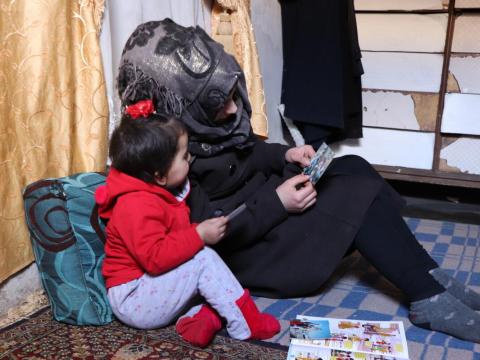
A Decade Forgotten: Protecting Children in Conflict
By Nathan McGibney, Senior Humanitarian Policy and External Engagement Advisor, World Vision
In 2020, the Syrian crisis has entered its tenth year and for millions of children the only reality they have known. Global records continue to be broken year on year including rates of forced displacement recorded at 79.5 million people by UNHCR including more than 30 million children driven from their homes across borders or within their own countries fleeing conflict. Between December 2019 and March 2020 alone, close to 1 million people including an estimated 600,000 children were forced to flee the military advancement of the Government of Syria in the North West of the country where millions are already dependent on humanitarian assistance.
The crisis in Syria is regularly and correctly referred to as a child protection crisis given the distinct and disproportionate impact of the conflict on children. However, the strength of this message is not resonating as loudly as it should, nor is it reflected in the actions of key decision-makers, including Governments and donors. The harrowing, human realities behind the record statistics, rates of displacement, and widespread poverty in Syria can often be omitted resulting in dehumanised and desensitized discussions and decision-making processes that fail to support pragmatic and actionable responses to child protection risks like child marriage, including key actions identified by children themselves.
The recent report from Syria Stolen Future: War and Child Marriage in Northwest Syria revealed an important insight into to the Syrian conflict that is often overlooked, namely the agency of children and communities and the decisions taken to survive under pressures and threats inconceivable to most people. The willingness and conviction to speak on the practice of early and forced marriage by children, parents and caregivers, and other community members despite the intensifying conflict escalating around them and for many the challenge of being displaced for the second, third, or even fourth time, was one of the most important findings of the report. Almost 100% of respondents aged 12 and above believed the practice of child marriage has increased significantly during the conflict and as a direct consequence of the conflict.
Children detailed harrowing realities and threats faced by them and their community driven by a constant fear of insecurity including airstrikes and other attacks on civilians, displacement and desperate living conditions in overcrowded and completely underserved makeshift camps or damaged and unfinished buildings or for many, in the open, the lack of basic services including healthcare services and education, and widespread multidimensional poverty that has pushed households to the brink and forced them to make decisions that not parent or caregiver should ever have to make.
When we talk about children in crises we can often have a tendency to speak of them and indeed for them, as a collective and as a homogenous group. This is not only inaccurate but also serves to detract from timely and appropriate responses to children in crises determined by age, gender, and diversity among other important determinants. From the report adolescent girls are overwhelmingly impacted by early, forced marriage and suffer disproportionate and distinct risks. Furthermore, the consequences for adolescent girls married before 18 were numerous and far-reaching, often inter-generational including early pregnancy and birth complications, physical and mental health challenges, gender-based violence, absence from education, and multidimensional poverty.
Child marriage is not an inevitability of conflict. It is in many cases driven by desperation and vulnerability, and enabled by a collective failure of the international community to prioritize and strengthen child protection systems. Characterizations of child marriage as a solely “traditional”, “cultural” or “religious” practices are reductive, poorly informed, and often times baseless and should be challenged.
In complex crises like Syria there is no singular response to child marriage and other major child protection threats faced by children. It requires a multi-faceted and cross-sectoral approach, and importantly leadership by national and international actors including donors to prioritize child-focused programming. Calls for increased and sustained funding for child protection programming are not baseless or simply rhetoric. They are the culmination of the voices and calls to action of millions of girls, boys, adolescents and children with disabilities living in the most dangerous places on earth who not only identify the risks they face but the solutions including support for education, health, mental and psycho-social health, household income and food security support, and essential child protection and protection services including GBV.
To support child protection systems households and communities must be supported with essential life-supporting and life-sustaining assistance, including social protection, income and food security, and access to basic services including health, education, and protection and child protection services. This must be available before reaching a point of desperation where irreversible coping strategies appear as the only option for the child and household.
Above all, to prevent child marriage and the dire realities lived by children in Syria over the last decade, the ultimate driver needs to be addressed to achieve any sustainable impact at scale, notably the end of the conflict. The international community has failed Syrian people and Syrian children in particular, spectacularly. A decade of diplomatic efforts has failed to protect and deliver for children. The strength and relevance of international law, international humanitarian law, and global accountability mechanisms are only as effective as their enforcement. For close to a decade, Syrian communities and humanitarians have warned against a lost generation of Syrian children, with every week that passes where children are subject to insecurity, displacement, poverty and destitution, and coping strategies like child marriage, we move one step closer to this reality. Time is quickly running out.

